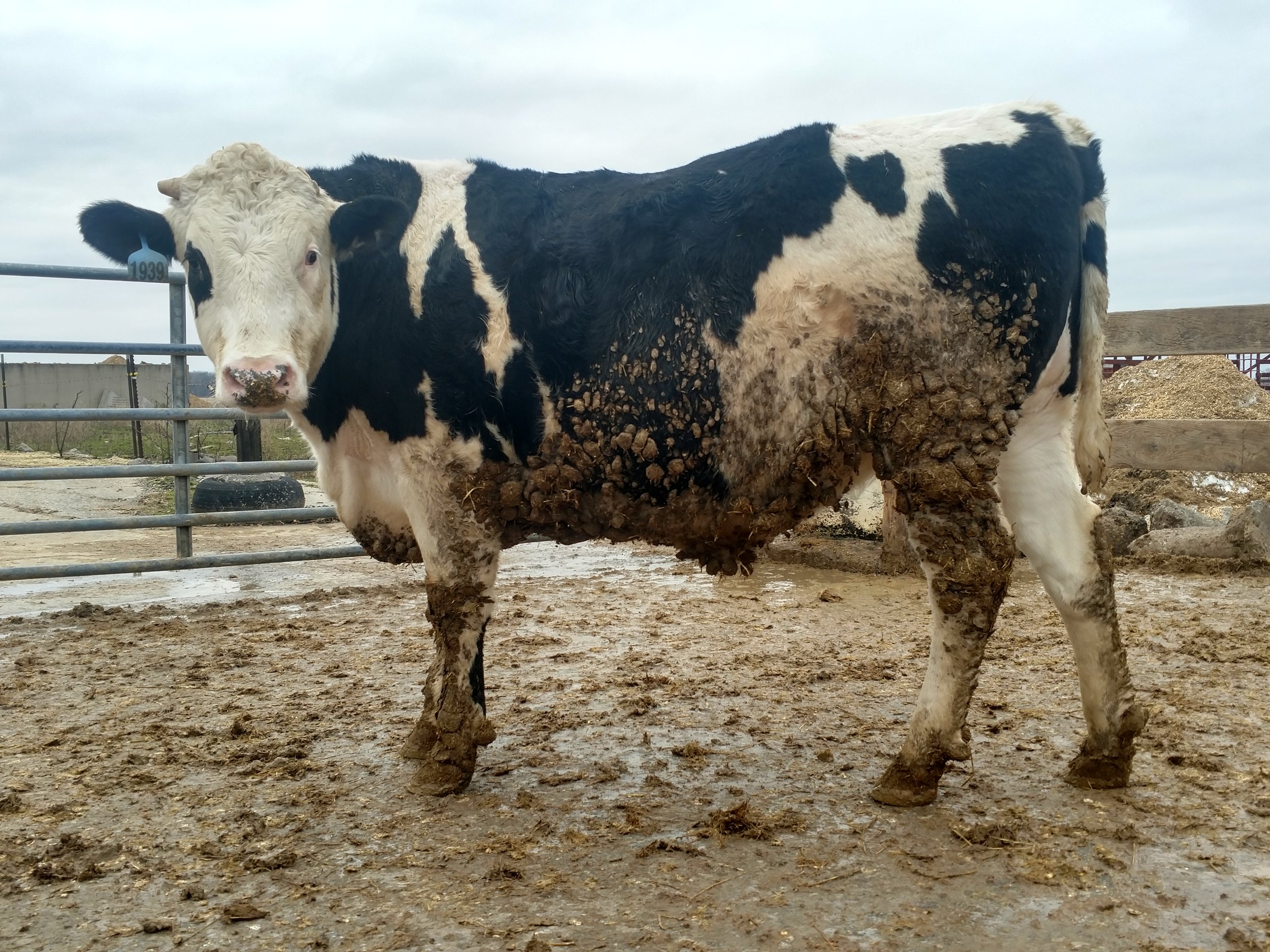The Difference Between Yield Grades and Quality Grades
Though we try and sell as much beef directly to the consumer as possible, most of our cattle go into the national food supply. There a couple different ways we market the cattle, but the end result is always the same. The cattle end up at about the same 5 plants where they are harvested and broken down into the retail cuts you find at your grocery store. When the carcasses go through the plant they are each given a yield grade and a quality grade. These grades can (depending on how we sold the cattle) determine how much, or little, we get paid for each animal.
Quality Grade
A quality grade is meant to measure the quality of the meat, makes sense, right? There are multiple different quality grades a carcass can receive: prime, choice, select, and standard. Prime, as the name implies is the best grade whereas standard is the worst grade. A carcass that grades prime will have a high degree of marbling, which means there will be a good amount of fat within the muscles. A carcass that grades select or lower will have virtually no marbling within the muscle.
This steer belonged to our "perfect" group! That group only had prime and choice quality grades.
Marbling is not the only thing considered when talking about quality grades. The inspector assigning quality grades must also consider texture, firmness, color, and age of the animal. While texture, firmness, and color are a bit more subjective, the physiological age of an animal can be accurately estimated by the degree of ossification of the bones. Approximate ages of the animals are classified into 5 grounds (A through E) with only the first group being the age range we aim for. Animals over 30 months will not grade as well as younger animals so we make sure we stay well under the 30 month cut off.
Yield Grade
A yield grade is based on how much meat a carcass will yield, which makes complete and total sense! Yield grades are numerical grades with a range of 1 through 5 where 1 is the best grade. A yield grade of 1 means that an animal has greater than 52.3% of its body weight being turned into boneless, closely trimmed retail cuts (BCTRC). A yield grade of 5 means that an animal has less than 45.4% of its body weight being turned into BCTRC.
Yield grades are determined by four different parameters.
Beef breeds tend to yield better than dairy breeds.
- Amount of external fat.
- Hot carcass weight.
- Amount of kidney, pelvic, and heart fat.
- Area of the ribeye muscle.
Each parameter has its own method of figuring it out as non-subjectively as possible so that each carcass is graded on the same scale.
What We Aim For
It's always better to aim for the middle than the extremes.
You may think that we aim for all prime steers with a yield grade of 1, and while in a perfect world that would be true it often is impossible to do. A prime steer generally is a bit fatter than the average which means he won't have as good of a yield grade as a less fat steer. A yield grade 1 steer is often leaner than the average and won't have a quality grade as desirable as a little bit fatter steer. When it comes to quality and yield grades it is often better to aim for the average. We would be thrilled to have all of our cattle grade choice with a yield grade of 2-3.
While prime, yield grade 1 cattle do exist, they are not the norm. It's always nice to have cattle grade better than you thought they would and always a bit of a sucker punch to the gut when you see a group that didn't grade as well as you thought they should. That's name of the game though and all we can do is learn from each group and make changes to better the end result at every opportunity we get!
Want to know more?
For the sake of this post, we have extremely simplified the whole quality and yield grading system. It is much more scientific and mathematically based than even we care to get into most of the time. If you are truly interested in learning the specifics on how cattle carcasses are graded here is a website describing, in explicit detail, how each carcass is graded as it goes through the plant: USDA Beef Quality and Yield Grades.



